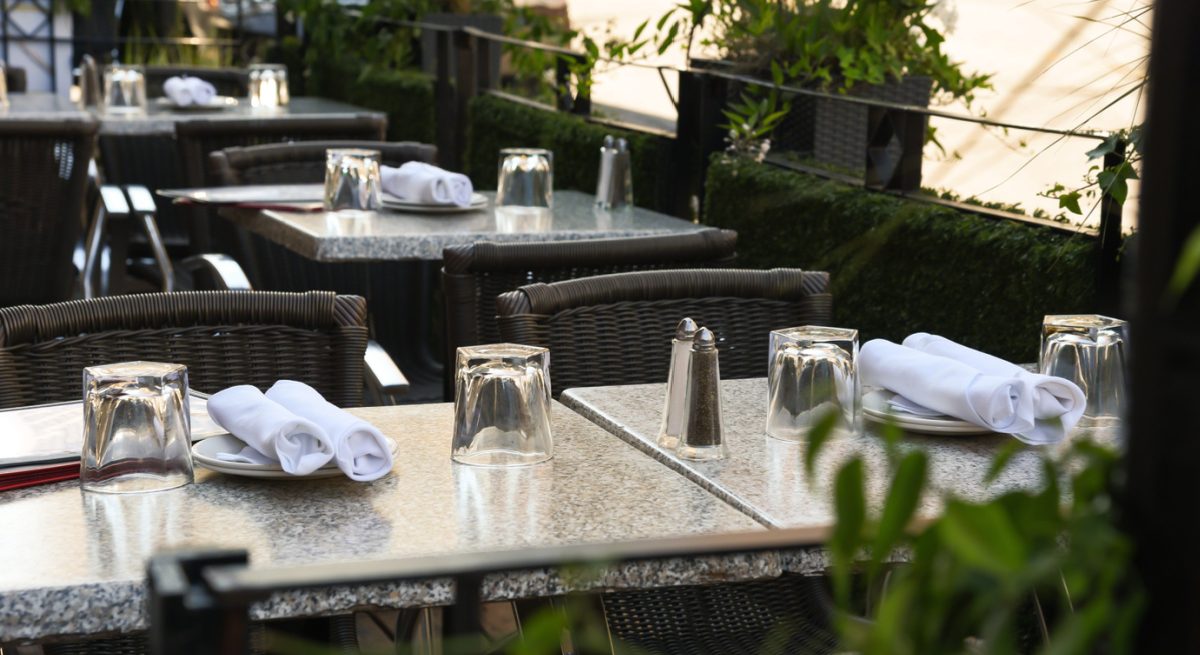Tips for Safeguarding Your Outdoor Dining Area
3 Min Read By Greg Bailey
Offering a safe and enjoyable outdoor dining experience requires careful planning. Here are a few outdoor dining tips to ensure that you are providing the best experience possible to your patrons.
How to Reduce Outdoor Slip, Trip and Falls
Your outdoor dining area should have a level walking surface with no loose materials that could contribute to slip, trip, or falls. The location should be away from high vehicle traffic entrance/exits. Visible barriers, wheel stops and appropriate signs should be in place to notify the driver of the possibility of more pedestrian traffic. Walkways should be examined for cords or other obstructions that may lead to a slip, trip, and fall. As with indoor dining, the outdoor dining should be adequately illuminated to ensure customers and employees can safely navigate the area.
Using Temporary Outdoor Structures Safely
Serving customers in an outdoor space is an appealing feature, but it’s not as simple as just taking a few tables and chairs from the main building. Temporary structures are often installed in the outside area to accommodate more seating and to create a more visually appealing space. Temporary structures should be installed per the manufacturer’s instructions and regularly inspected to ensure stability during use.
Society Insurance recommends contacting your local “call before you dig” hotline before driving stakes in the ground to prevent any utility line damage. In addition, upon setup, and routinely thereafter, examine the entire structure to ensure the poles, ropes, stakes and canvas material are in good condition and secure. All umbrellas, covers or awnings should be secured to prevent damage and possible injuries.
Inclement Weather Hazards
Although outdoor dining is especially enticing on a beautiful day, restaurateurs should be prepared if inclement weather occurs. It is recommended to monitor weather forecasts and have an appropriate plan in place to respond to forecasted weather events. On a rainy day, some areas of the structure may display ponding or pocketing which adds additional weight. If allowed to accumulate, this could contribute to a structural failure and could cause injury to customers and employees.
With rain, often comes wind. If it is windy, pay attention to stakes, ropes, assembly poles and tension assemblies for weakening. Remove umbrellas and other items that may become loose or damaged before the wind arrives. If lightning is present, the area should be evacuated during severe weather conditions. When it snows, most temporary outdoor dining structures are not designed to support the added weight of snow and can lead to structural failure. Ultimately, it is essential to plan accordingly for the weather.
Outdoor Heating Safety
When the temperatures drop, there are a variety of units that are used for outdoor heating. Regardless of which one is used, it should always be listed for commercial use. If you are using an open flame gas pit, it is critical to have a flame guard present to reduce the risk of patrons coming in contact with the open flame. These guards should rest higher than the open flame to reduce the possibility of interaction with the flame. In addition, block off the area approximately three feet in all directions from the flame to reduce the risk of customers getting too close to the heated source.
Proprietors that own and operate outdoor heating units must ensure that all employees are educated on how to shut off the fuel supply in the event of an emergency. The fuel supply valves should be clearly marked and visible. In case of an emergency, there should be fire extinguishers placed adequately throughout the space where they can be easily identified and accessible. Lastly, ventilation is also extremely important. It is imperative to keep the area open as much as possible to resupply fresh air and reduce the risk of carbon monoxide exposure.
While you may attract more customers to your restaurant by offering outdoor dining, be sure to consult with all local authorities, your attorney, and your insurance agent before taking any immediate action.
This information is provided as a convenience for informational purposes only. This information does not constitute legal or professional advice. It is provided to assist you in recognizing potential unsafe work problems or conditions and not to establish compliance with any law, rule or regulation.


